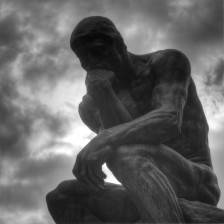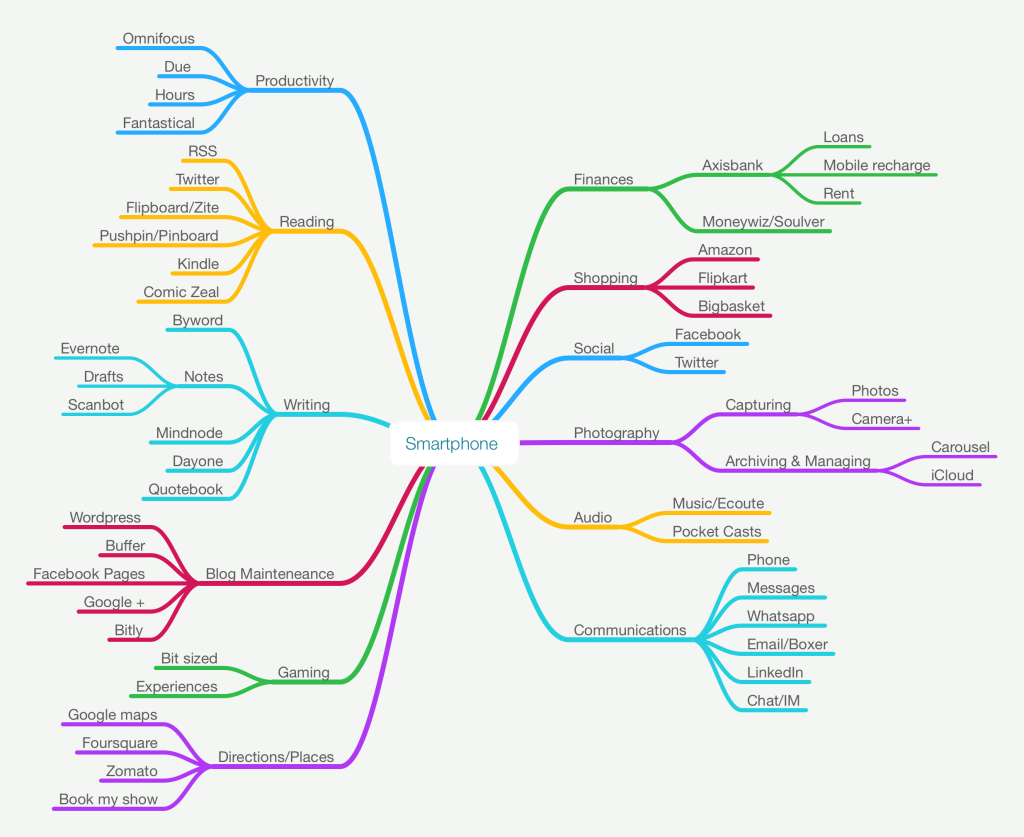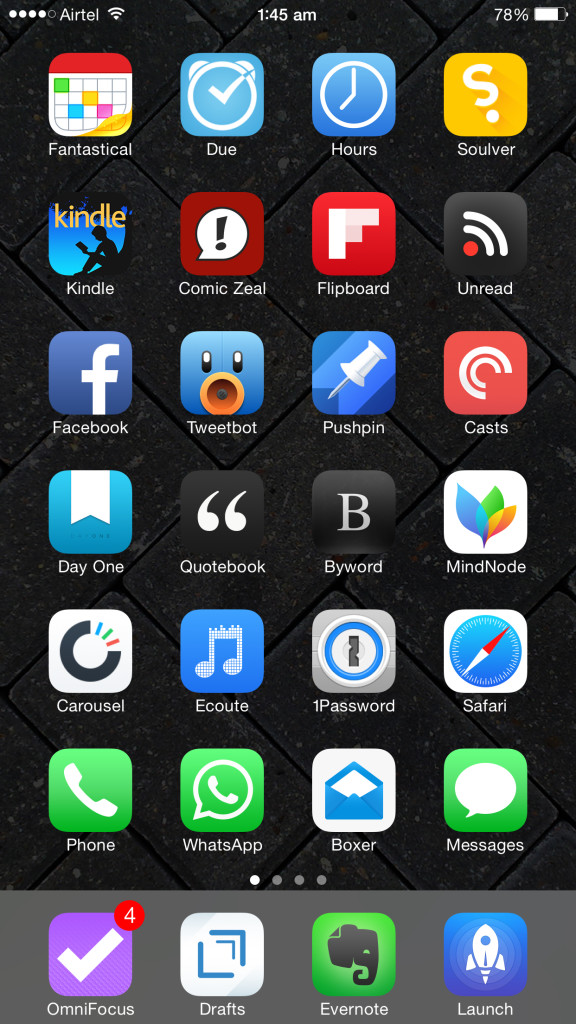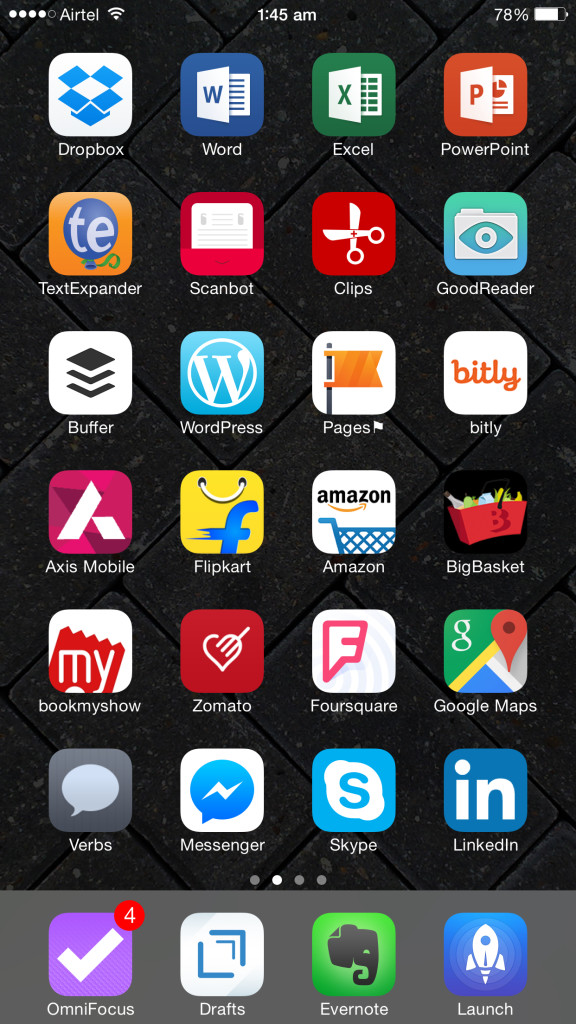After completing graduation I was one afternoon, lazing around with my friends. We planned to go to a movie but was waiting for another friend to show up. He came-in twenty minutes late. We had to scrap the movie plan, furiously we asked where he was. He said, ‘I went to submit my ICET form since it was the last day’ (a competitive exam you take in my state to get admission into MBA/MCA). ‘Ah! OK’ nodded everyone, but I was shocked. I grabbed the arm of a good friend in the group and asked what ICET was and he told me what it was. I was stunned. Forget about it being the last day, I never even knew I had to write a competitive exam to get into MBA (Yes, my ignorance was legendary). I immediately rushed to submit my form. I barely made it. I was furious with myself, how could I not know? Why didn’t I check early? But with whom should I check? I knew no one, my friends were few and as luck would have it most of them were in different fields. Newspapers? We couldn’t afford regular newspapers then, probably got them only when some important event had transpired. Should I have approached a library for newspaper? Probably I should’ve. But, where on the earth was the local library? Where would I find that? That year I did not make it to MBA, ’cause I was not prepared. Similar thing happened again when I applied for MA, I again barely made it on time, this time not for exam, but for admission. These incidents taught me one-thing — knowledge is important, very important. MBA re-emphasised that fact. But, my problem was — access to knowledge — where do I go to know stuff? It further got a little complicated because I was an introvert and preferred not to approach others. Then came the Internet.
Though I had a dial-up connection, it never struck me to use it. I never quiet understood there was a ‘know-it-all’ called Google which could search the whole world for me and show relevant results. It was only during MBA when I was forced to research online for better understanding of topics, did I start taking advantage of the Internet. ‘Now, I would keep up with the world’, I told myself. Internet turned out to be the invention that had the most impact on my life. Now I knew I just needed a computer to ‘know’. But, it was not until the iPhone that came in 2007 that the true mobile revolution started. It ushered in an era of smartphones which brought the power of computer and internet into our hands. I had to wait for another four years to get my hand on one, but, when I did, boy, was I happy. Now, I could be connected, tethered to the Internet always. I abused the power. The smartphone actually made me smart. It quickly became a device I relied on the most. It sometimes filled-in a genuine need, sometimes it filled-up the vacuum (in our lives).
Now, three years down the lane, I’m bogged down by information overload. Technology if solved a few problems, sure did create new ones (one being — to put our phones down to actually connect with others), but should it be blamed? Violence – is it because of the gun or the finger which pulls the trigger? The solution like everywhere is — moderation. When used so, technology and by extension smartphones can be our personal assistants — our Jeeves – solving life’s problems (pun intended). Need directions? Pull out your phone. Need a new place to eat? Pull out your phone. Need to find out the best price? Pull out your phone. Need to draw? Pull out your phone. It is precisely this reason why we are so connected to our phones; it’s always there to rescue. It’s the most personal & versatile device ever invented. If usefulness is one aspect, the other aspect which keeps us glued to our phones are the ‘apps’. We’ve come to experience the world through these devices and that experience is largely governed by the applications on that platform so much so that they either make or break it. These apps also determine what all we can do with our phones.
Over the last three years my usage of apps changed. Initially it was about buying new apps, then when app fatigue set-in, I stopped buying and started to focus more on workflows. For what was I using my phone? What were the apps/services I was falling back onto regularly? Was I using the phone as a diversion, a distraction from actually getting work done or did it actually help me do more? So, I made a list of all the things I do on my iPhone and came up with this:
To be honest for a second I was ‘like wow’ I do so much on a phone? No wonder I depend on it so much. I was using my phone for:
- Productivity
- Reading
- Writing
- Blog maintenance
- Gaming
- Finding places
- Finances
- Shopping
- Social
- Photos
- Audio
- Communications
And, what were the apps I was using to get work done?
- Productivity: I have four applications I use to manage my time and track my todos.
- Omnifocus, hands down the best app if you are into GTD. I’ve done multiple posts describing my Omnifocus workflows which you can check out clicking here, here, here and here.
- Due, the reminder app I use if I need to be nagged about something without fail. The app supports multiple reusable reminders with support for natural language input making it the best reminder app on the platform.
- Hours, a new entry into my workflow. I’ve long wanted to log my time and this app has turned out to be the best in market to do it with a very intuitive interface.
- Fantastical, the best calendaring application on iOS. This is how the default calendar app should’ve worked. I track all my appointments in this app.
- Reading: I do two types of reading on my phone — books & internet.
- Internet: I spend anywhere between two to three hours a day reading stuff online and ’ve written about my reading strategy before. I do it in levels. Let me explain it:
- RSS – I use the beautifully minimal ‘Unread’ app designed by Jared Sinclair to read my RSS feed. I subscribe for RSS only if I really love the blog/writer/website so much that I want to read all of what they write and only if they share the complete post via RSS (some websites truncate the content after the first paragraph and leave a link to the website often forcing readers to open the websites; in these cases I use Twitter). This is my first level.
- Twitter – I use ‘Tweetbot’ to browse through Twitter. The app is so beautifully designed that it has come to represent Twitter for me. Browsing Twitter from anywhere but this app makes Twitter weird for me. I follow a couple of independent developers, Apple fans, writers and some websites here. I use Twitter more as an information gathering tool than as a social network. This is my second level of reading.
- Flipboard/Zite – these two apps form my third level of reading. If RSS limits me to read few must read articles and Twitter to a filter bubble, it is via the intelligent recommendations of these two news & blog aggregators that I get to know headlines and different/new opinions from all over the world. I follow everything from Verge to The Guardian to get my daily dosage of news. This is my third level of reading.
- Pushpin/Pinboard – Pushpin is the app I use to browse the service ‘Pinboard’ – a bookmarking website. What all links I find interesting but have no time to read or those which I’d like to read again get saved to Pinboard via the Pushpin extension. This app rounds up my ‘reading on the internet’ category.
- Books: I spend 1–2 hours everyday reading books, though I prefer my Kindle, I do sometimes read on my iPhone.
- Kindle – I’m a eBook convert. I absolutely love my Kindle which I carry almost everywhere. But, before I could get one, I used to read my eBooks on my iPad/iPhone in this app. The ease of buying and the amazing sync (even of your reading position on a given page) makes it the best app to read your Kindle eBooks.
- Comic Zeal – this app is a new addition to my homescreen. I’ve always loved comics from the time I was a kid but couldn’t really pursue the hobby because of the huge costs associated with this hobby. However, over the years, I did collect a few comic books in digital format but was not sure how to read them until I discovered this app. If you are into digital comics, do not look beyond this app (just see that you have enough space on your device).
- Internet: I spend anywhere between two to three hours a day reading stuff online and ’ve written about my reading strategy before. I do it in levels. Let me explain it:
- Writing: My iPhone is the device which is always on me, so naturally it gets used a lot. I have a forgetful memory, so I outsource a lot of ‘remembering stuff’ to my iPhone. I write anything from snippets of text to mind-mapping to blog posts on my iPhone. The apps that get used are:
- Byword – Billed as distraction free (read no nonsense) writing app supporting markdown, I use it to write blogposts on my iPhone & iPad (like what I am doing right now) and to post to WordPress or save to Evernote.
- Notes
- Evernote – is my digital file cabinet. This is where I store everything, from blog ideas to manuals to bills to favourite articles. I don’t know how anyone can go digital without depending on Evernote. I’ve previously written about Evernote, if you want to read, you can click here.
- Drafts – is the what I call the incubator app. This is what I launch when required to write anything on my iPhone, it is after I write it here that I think of what I should do with the text — should it go to Evernote for storage? to Omnifocus as todo? to Boxer as email? Drafts supports sending text to multiple apps at a time and is considered to be the pioneer of iOS automation.
- Scanbot – I’m a digital convert and as a part of that I convert a lot of paper items to digital documents and I need a scanner for that. Scanbot is one of the best in the category. It supports saving to Dropbox, Evernote and also OCR, making the text in the scanned document searchable. A very handy application if you want to go digital.
- Mindnode – I don’t know why I didn’t try this app earlier but mind-mapping on touch devices feels so natural. The above map which you saw was created in Mindnode. It is said the brain does not think linearly and if you have lot of thoughts you want to get out and see how things connect to each-other, to clarify jumbled thoughts, mind-mapping can be of help. If you want to try that on your iOS devices, Mindnode is the app to get.
- DayOne – I used to journal regularly before I stopped completely. There hasn’t been a day since then I didn’t think of getting back into the habit again. I simply didn’t have the discipline to write everyday. I don’t know if I can get back to paper journalling but I’ll be glad if I could stick to the habit in DayOne – cause it’s the closest a digital application can come to venting on paper.
- Quotebook – I love quotes. If you’ve been following me on Facebook or Twitter you know I share a lot of them. I feel they just save us the effort of saying something, because it was already said in the most beautiful way. I save all quotes I love to quotebook. I wish quotebook had a way to backup to Evernote.
- Blog maintenance: I manage my blog with the official WordPress app, shorten hyperlinks using Bitly, share content through Buffer and manage my blog social pages via the Pages (Facebook) and Google + app.
- Finances: I use my bank’s default app to pay rent & loans, recharge my phone. I really wish I could pay all the utility bills also through my mobile. But, I know that day is not far. But, more than paying, I was/am always interested in tracking my expenses to know where I was spending the most and cut down on them. Over the last three years I tried various apps, but, kinda settled on ‘Moneywiz’. Though the app had all the features I wanted in a full fledged financial application its design was never intuitive. It took too many taps to input one transaction and so slowly I started to neglect it. Then, I found ‘Soulver’, an app billed as a notepad calculator. But, I found tracking monthly expenses in this app was very easy, I just had to write everything in natural language and the app would understand what I wrote and calculate accordingly. For example: if I type “spent ₹50 each for 6 items”, the app would calculate and show ₹300. I would still love to track my expenses in an easier fashion, but haven’t actually liked any app so far. For the time being I’m good with Soulver.
- Shopping: For almost two years my wife and I used to goto the supermarket every month to get groceries, that was until we discovered ‘Big Basket’ – an online grocery store with free and quick delivery. Staying in Hyderabad and doing grocery shopping online was wicked. It was like living in the future (atleast until my grandmother said, ‘I call our local store to send me groceries, they do and come home to pickup money, how different is this?’) Their app is serviceable. Nothing great to talk about, but, it gets the job done. Other than that, I shop both on Amazon & Flipkart purchasing after comparing prices.
- Social: Facebook is the only social network I’m active on. I use Twitter to get news. For a social network which wants people to spend time on it, the Facebook app is surprisingly very ‘meh’. LinkedIn is another professional social network I use. Even this app is ok at best and feels very cluttered. Both the apps get used because of the service, not because of the app experience.
- Directions I was lost one day, trying to find my way to the coffee shop my then future wife was waiting for me. I pulled out my iPhone opened google maps and gave the auto driver instructions to the place. Within five minutes I was at the shop. I remember smiling to myself that day, ‘technology’. Then came Foursquare an app for ‘what if I didn’t know what to look for but wanted to know what was available around me’. Then came Zomato – the best app to find restaurants near to you. A very beautiful app with the ability to bookmark, call for reservation and leave reviews, zomato is a must have app for any food lover or those simply looking for a new place to eat. The last such app I use is ‘Book My show’ a cinema ticket booking app in India. Long gone for me are the days of standing in queue for tickets. Just order them online and pick them up when you reach the theatre. I’ve even stopped going to the cinemas which no longer support this app. Technology makes you lazy, you say? I’m not the one to disagree.
- Photography: ‘Best camera is the camera you have with you’ they say and iPhones are known for their excellent cameras which keep getting better with every new model. iPhone organises photos in its ‘photos’ app in three tabs – photos, shared & albums. Photos tab shows photos based on the day they were taken also highlighting the place they were taken. ‘Shared’ tab shows the photos that we shared with other iOS users (who they can even comment on) and the third tab shows the ‘albums’ we created. This is one area Apple needs to improve on. The app is not intuitive. I can delete the albums, but not the photos in it, to do so, I need to access them in the ‘photos’ tab. Photostream is useful only if you’ve atleast upgraded to the 20GB plan. So, I prefer archiving & managing photos in Dropbox. I was a paid customer to ‘Loom’ (a photo storage/management service) before it was bought by Dropbox and changed into Carousel. Though Dropbox has been updating the ‘Carousel’ app all through the year it still just is ‘ok’ to use. The app simply lacks personality. But, given the lack of other online photo management services, I’m sticking with Carousel (after the debacle of Everpix & Loom, I did not dare to try out Picturelife or Shoebox. You can click here to see my post on digital photo management.
- Audio: What was the revolutionary product for Apple before the iPhone? iPod ofcourse. Apple revolutionised the entire music business with iTunes and song for 99 cents (in India it is generally ₹12 to ₹15). iPhone is a full fledged iPod. Downloading and listening to music has never been so convenient. But, what if you already have a huge collection of music? Like I do. You subscribe to iTunes Match. A service that maps all the songs on your hard-drive to the songs in Apple’s catalogue (and uploads those it cannot map) making all your songs accessible anytime, anywhere provided you have a good internet connection. The beauty of having a smartphone is that you can change the app you are using for a service and it changes the complete experience of that service. Ecoute is one such app for music on the iPhone. Though it lacks options like creating playlists, Ecoute uses the album art as background when you play songs which really customises the experience. It can even play songs on your iTunes match library. Another app I use, though not for music, is ‘Pocket Casts‘ a beautiful podcast client. There are lot of good podcasts one can subscribe to and pocket casts delivers superbly by supporting playlists, streaming and display of lovely podcast cover art.
- Gaming: I’m an amateur gamer. I own a PS3 and game regularly. However, I’ve always had a thing for handhelds. Though I bought a PSP, it somehow was a mediocre device. It was not the handheld experience I was looking for. Nintendo DS on the other hand, had good games but most felt like targeted to kids and were damn costly in India. So, I pretty much gave up on handheld gaming till I got my iPhone. I started buying games ‘thinking’ I’ll play them, but all they ended up doing was cluttering my phone. It took more than a year to understand that smartphone gaming was different and it would never replace hardcore gaming experiences or create similar experiences. However, it could create different experiences. Each platform has its strengths and weakness, so do touch devices. It would be better if we chose games based on that strategy. After I got my iPhone 6 plus, I again got into mobile gaming, but ‘am taking it slow. Two of the best games I played so far are: ’Monument Valley’ & ‘The Walking Dead’. Crafted for touch devices these games felt natural on the touch screen. One another way of looking at mobile gaming is — what are you looking for? Bit sized gaming? Or experiences? How much time do you think you’ll spend playing everyday? And where? Do you have enough time or do you need quick fixes? The iPhone is great at both the kind of games — anything from ‘Angry Birds’ to puzzles like ‘Threes’ for quick fixes to ‘GTA Chinatown Wars’ and ‘Deus Ex: The Fall’ for experiences.
- Communications: After all that we see a smartphone can do it is easy to forget it is also a communication device. More than Phone, messages (which send free messages to other iOS devices when connected to internet), email (experience of which can be enhanced by some great apps like Boxer and Dispatch), chat (google hangouts, Verbs, Skype), messaging apps rule the day today. Though I wanted to try different messaging apps (‘Slack’ I’m looking at you), I had to come back to only one app – Whatsapp. The reason was simple — that’s where the friends are. Social apps make no sense unless all of our friends also use the other app. And, it is really difficult to move them once they’ve settled. I think that’s the reason Facebook bought Whatsapp, it knew folks wouldn’t want to move to other services just to try them out.
It’s not just understanding your workflow, your phones’ strengths and limitations but also the arrangement of apps on your homescreen that can affect your productivity. I organise apps based on function — what do I do with them? And, once I fix the position of the app on the homescreen, I don’t change it. It helps in building muscle memory which further builds efficiency. If you see my homescreen, I have it divided into the same categories I described above (in addition to a few apps which enhance the functionality of the iPhone). This is how it looks:
Given the amount of time we spend on these smartphones, the amount of work we do, what are the workflows you’ve identified dear reader? Care to share in the comments?




uh…..you do know that all the stuff these apps do can already be done on your iPhone….without spending additional monies………
Hi Sallie, thanks for reading the post. Yes, you can do most (but not all) of the stuff I mentioned in default apps provided by Apple. But, my personal opinion is that they are limited in functionality. Also, you do not have dedicated apps towards mind mapping, money management, journalling, reading, (iBooks is severely limited in my country), etc. All the apps I mentioned here are really good at what they do and enhance my workflow. I’ve found them very useful. Do give some of them a try, you might enjoy too.